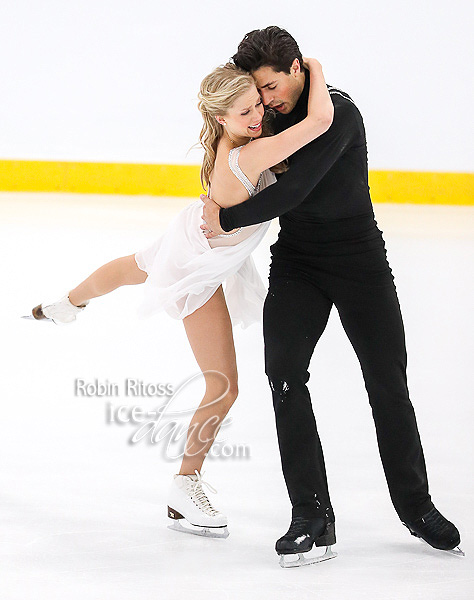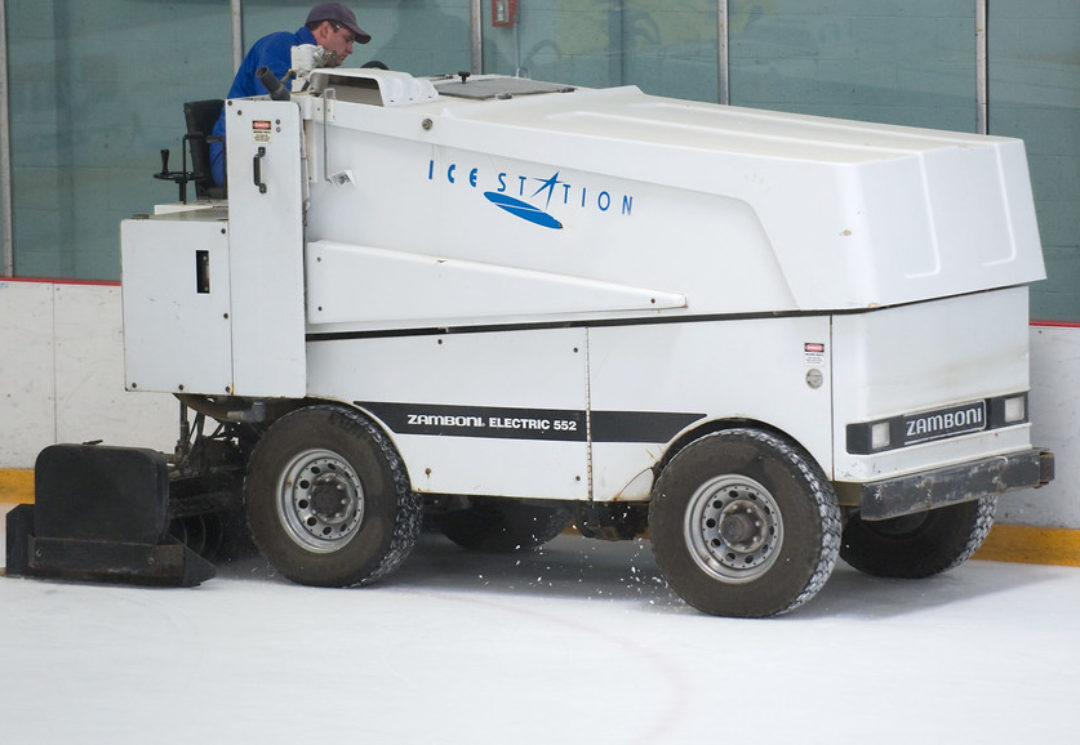 It’s hard to explain to the casuals that September is the busiest part of the figure skating season. September 13-15 was the annual “hell weekend” for dedicated fans, with two Challenger Series competitions and a Junior Grand Prix event. There was another Junior Grand Prix the weekend before, and two more Challenger Series the weekend after, plus shows, a Russian test skate, and an American novice-junior domestic event. I don’t know of anyone who isn’t behind on their viewing, so here’s your excuse to catch up on the most memorable ice dance of the past three weeks.
It’s hard to explain to the casuals that September is the busiest part of the figure skating season. September 13-15 was the annual “hell weekend” for dedicated fans, with two Challenger Series competitions and a Junior Grand Prix event. There was another Junior Grand Prix the weekend before, and two more Challenger Series the weekend after, plus shows, a Russian test skate, and an American novice-junior domestic event. I don’t know of anyone who isn’t behind on their viewing, so here’s your excuse to catch up on the most memorable ice dance of the past three weeks.
Arina Ushakova & Maxim Nekrasov, JGP Kaunas Rhythm Dance
The ISU cracked down on creativity in the rhythm dance this season, making it clear that teams need to conform to traditional tango music selections. In spite of this, young Russians Ushakova and Nekrasov (and their coaches) have found a way to tell a unique story, using costumes and choreographic touches to create a post-apocalyptic twist on familiar music. The mesmerizing Ushakova deserves the most credit for their interpretive flair, although Nekrasov’s keen sense of timing is a big factor, too. It’s especially risky for a junior team to keep twining their legs and turning into each other’s circles as Ushakova and Nekrasov do. Their success in navigating their steps shows a remarkable level of trust, which opens the door for even greater feats of choreography and chemistry as this team matures.
Avonley Nguyen & Vadym Kolesnik, JGP Kaunas Free Dance
After several years of nearly unrivaled dominance of junior ice dance, the United States is searching for its next big team. With a silver medal at their first international event of the season, Nguyen and Kolesnik have made themselves impossible to ignore in that conversation. It’s hard to tear your eyes away from Nguyen, who emotes like she’s been studying film of Meryl Davis’s eyes since pre-school, but don’t ignore Kolesnik, who has a rare gift for focusing his gaze. No matter where he goes, he seems to be looking right at Nguyen. For such a young team, they’re remarkably adept at maintaining the character of their music through difficult elements, particularly their whirling twizzles. And their closing choreographic lift is one of the loveliest elements I have seen in ice dance this season.
Anastasia Shpilevaya & Grigory Smirnov, Russian Test Skate Free Dance
Shpilevaya and Smirnov looked like breakout stars of Russian ice dance a couple of seasons ago, but they seemed to fall off the radar when Smirnov suffered an injury that required surgery and a long recovery. While the rust still shows here and there, Shpilevaya and Smirnov proved at their national test skate that they’re ready to pick up where they left off. A percussive, aggressive rock program is a risk in today’s ice dance world, but this team have found ways to show off their musicality. It’s visible during the big moments, like a dizzying rotational lift that takes advantage of Shpilevaya’s impressive flexibility and control, as well as in the small touches, like a perfectly synchronized turn and kick timed to a booming drumbeat. Let’s hope they have some chances to build international momentum before their first senior Nationals.
Charlene Guignard & Marco FAbbri, Lombardia Trophy Rhythm Dance
Watching Italy’s Guignard and Fabbri perform their tango, I realize what bothers me about so many other ice dance tangos. Many teams follow their instinct to lean in toward each other, to increase the feeling of sensuality and intimacy. Guignard and Fabbri, however, know that tango dancers should be two parallel planes, facing outward together, creating sexual tension out of how close their hips and chests come without touching. There’s also plenty of technical wow factor here, from the mid-twizzle transition sequence of difficult turns on one foot, to the physics-defying stationary lift. Guignard and Fabbri cruised to an easy win at Lombardia, but their massive score didn’t seem like home-ice inflation – rather, it’s a sign of what a formidable team they’ve become.
Madison Hubbell & Zachary Donohue, US International Classic Rhythm Dance
This isn’t so much a tango as Hubbell and Donohue doing their signature shtick to a tango soundtrack, but I can’t complain about a strategy that pays off so well. Donohue chases Hubbell around the rink like he wants to devour her; Hubbell half-smiles back at him like his persistence is getting her off. In the meantime, they show off their exceptional ice coverage and a breathtaking new lift, and glide to the highest rhythm dance score of the season so far.
Marjorie Lajoie & Zachary Lagha, JGP Richmond Free Dance
I covered this team in my last post, but here they are again, because it’s just so exciting to see the long-overdue arrival of the next big thing in Canadian ice dance. They cleaned up the technical problems that held them to silver in Linz, in time to blow away the field on home ice. Their artistry and synergy stood out all the more in a week when the Americans couldn’t get their technical elements together and the Russians snarled like competing at the JGP was a form of punishment. Lajoie and Lagha were a bright ray of hope in a rough week of junior ice dance.
Karina Manta & Joseph Johnson, US International Classic Free Dance
Some teams make my “best of” lists because of high scores and polished technical content, and others get here because the choreography break in their free dance includes actual vogueing. Manta and Johnson are unlikely to ever contend for a national podium in the United States’ overcrowded ice dance field, but this performance shows why they earned a plum host pick for Skate America later this season. Their “Sweet Dreams” free dance is TV ready, and cleverly constructed to highlight their strengths (massive combination lift, even more massive charisma) and mask their weaknesses (limited speed, flat edges). The protocols reveal a structural snafu they’ll have to address in time for the Grand Prix – part of their choreographic step sequence accidentally counted as a separate choreographic spin – but I’m sure it will be as impeccable as Manta’s platinum roots by the end of October.
Christina Carreira & Anthony Ponomarenko, US International Classic Free Dance
No matter how severe my lyrical free dance fatigue gets, Carreira and Ponomarenko are here to remind me that my problem isn’t with the style itself. The key is this team’s emotional range: they work with the highs and lows of their music, gradually raising the intensity of their furrowed brows and dramatic reaches, then letting that intensity ebb away. There are occasional reminders that this team has just graduated from juniors, especially in their lift transitions, but their artistic maturity is right where it needs to be. They also pulled off the most perfect twizzles I’ve seen this fall.
Victoria Sinitsina & Nikita Katsalapov, Ondrej Nepela Trophy rhythm Dance
Sinitsina and Katsalapov’s steps look so precise and tango-like throughout this program, their protocols threw me for a loop. Watching again, I saw where the levels came off in their tango patterns and their midline step sequence – a flat-edged turn here, a timing error there – and from that, I understood where their astronomical components score came from. Everything in this program looks purposeful and sharp, even the mistakes. It’s especially difficult to maintain the tango character while not touching, but Sinitsina and Katsapalov have a way of looking like they’re still in hold even when they’re apart. That understanding of music and style brought Sinitsina and Katsalapov an insurmountable first-round lead in what could have been a tough field.
Lilah Fear & Lewis Gibson, Ondrej Nepela Trophy Free Dance
The Ondrej Nepela Trophy free dance took place on September 22nd. The calendar might say that’s one day late for Earth, Wind and Fire’s “September,” but I’m glad to get to watch this program all season long. It takes a certain lack of vanity to choose a disco medley for your free dance, and significant restraint to keep your performance from descending into irony. Fear and Gibson, who skate for Great Britain, are having plenty of infectious fun here, but they’re also using kitschy disco excess as a starting point for lift positions and a choreographic slide that wouldn’t make sense in any other genre. The technical bar is set high throughout this program, but nowhere more than in their smooth, challenging twizzles, which show up dangerously (and rewardingly) late in the program.
Lorraine McNamara & Quinn Carpenter, Ondrej Nepela Trophy Free Skate
I don’t love this program. It’s a bit quiet and delicate for me, and too conservative for a team whose most memorable performances are infused with a playful chaos. I do, however, love what’s going on during this program. Unlike many teams with freshly upgraded twizzles, McNamara and Carpenter make their difficult turns look light and natural, and they cover almost the entire length of the rink in the process. The lifts are designed to make both skaters look graceful; she’s the star, but his body shapes would look elegant if he were alone on the ice. This team’s longtime partnership has brought them some of the most effortless chemistry in ice dance, and it’s a pleasure to see them expanding their emotional range. Would that growth show through in a more experimental or high-concept program? Probably, but for a team with no time to waste in earning international attention, keeping it simple might be the best strategy for the season.
Kaitlyn Weaver & Andrew Poje, Autumn Classic Free Dance
Most of the attention paid to this program has centered around Denis Ten, who suggested the music and concept to Weaver and Poje before his death. But looking at this program solely as a tribute to Ten, while totally understandable, does a disservice to an innovative and captivating program that deserves to be a signature piece for the veteran Canadians. The otherworldly stationary lift that opens the program shows how technical content can push forward an emotional narrative. Like many of the difficult elements in this program, that lift takes advantage of Poje’s height and core flexibility, which allow him to support Weaver’s body while both extend out into space in different directions. The effect is appropriately ethereal and sci-fi, like they’re alone together on the ice. September is probably too soon to declare that a program is career-defining, but it’s also the time of year for wild predictions. I think this program is going to set the tone for the next four years of ice dance, and I’m all for it.
Next on the Finer Sports: One discipline’s worth of backlog down, three to go.
